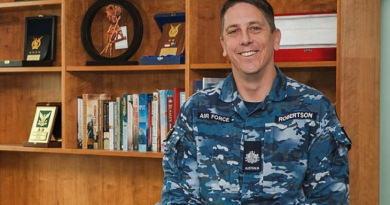Support delivered to cyclone recovery

Air Force has delivered five Victorian State Emergency Service vehicles to Western Australia, continuing the support of recovery efforts following Tropical Cyclone Seroja.
CAPTION: A Victorian State Emergency Service is driven off an Air Force C-17A Globemaster III aircraft, after being delivered from to Geraldton in Western Australia from Melbourne. Story by Eamon Hamilton. Photo by Leading Seaman Kieren Whiteley.
A C-17A Globemaster from No. 36 Squadron flew the vehicles from Melbourne to Geraldton on April 19.
Air Force began providing airlift support for the recovery efforts the day after the cyclone hit.
On April 11, the cyclone made landfall north of Geraldton, with wind gusts of up to 170km/h reported.
An Air Force C-130J Hercules transport aircraft deployed from RAAF Base Richmond to RAAF Base Pearce on April 12, responding to a request from the WA Government and Emergency Management Australia.
The Hercules carried a Defence Medical Crisis Assessment Team, available to support the Western Australian Government as needed.
The Hercules immediately served as an ‘air bridge’ to reach cyclone-affected communities.
With support over the following days from No. 25 Squadron air movements’ personnel, the Hercules delivered generators, recovery vehicles and equipment, and emergency services personnel.
Commander Air Mobility Group Air Commodore Carl Newman said airlift support enabled emergency services to respond to the recovery efforts more flexibly.
“It’s 350 kilometres from RAAF Base Pearce to Geraldton, which is a four-hour drive or a 45-minute flight,” Air Commodore Newman said.
“Having a Hercules available to assist recovery efforts means emergency services can conduct multiple flights from multiple airfields to the disaster area in a single day.
“The full extent of destruction following a cyclone is also not immediately apparent, and airlift allows a responsive option to deliver personnel and equipment in the days that follow.”
Tropical Cyclone Seroja devastated homes and businesses, as well as damaging key infrastructure including powerlines and water pump stations for farmers.
Flight Lieutenant Kyle Hornberg, a pilot with No. 37 Squadron, led the Hercules crew in its support of local emergency services.
“We were very happy to be ‘on station’ in Western Australia within a day of the request being received, and able to support most contingencies for this task,” Flight Lieutenant Hornberg said.
“Our squadron is often at its best when it’s supporting humanitarian assistance and disaster relief operations, or on Defence assistance to the civil community tasks.”
In recent years, No. 37 Squadron has been one of several RAAF units called out to support state and federal governments following bushfires, floods, cyclones, and the COVID-19 pandemic.
The repeated engagement with these government agencies – in this case, the WA Department of Fire and Emergency Services – is helping these squadrons deliver better support in a crisis.
“The ease with which we’ve integrated with these agencies has shown how far we’ve come in working together,” Flight Lieutenant Hornberg said.
“We will continue to be more effective as we learn how to work together.”
.
.

.
.





